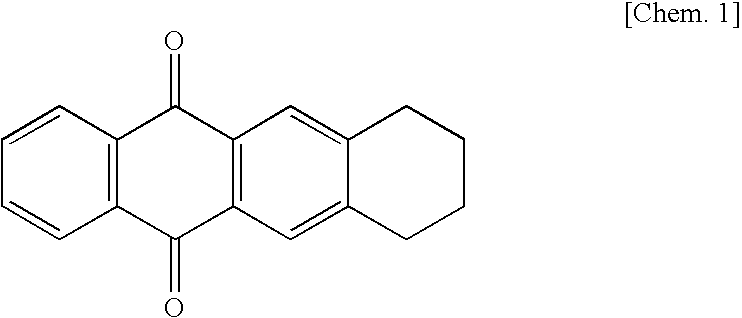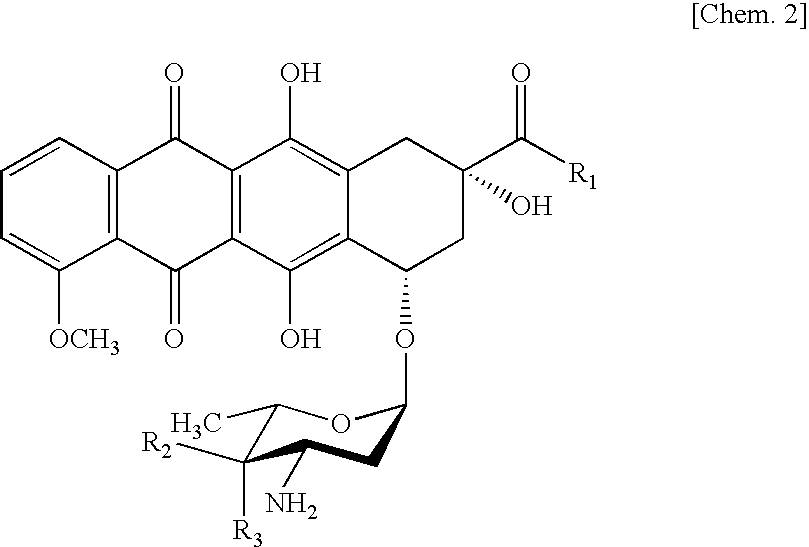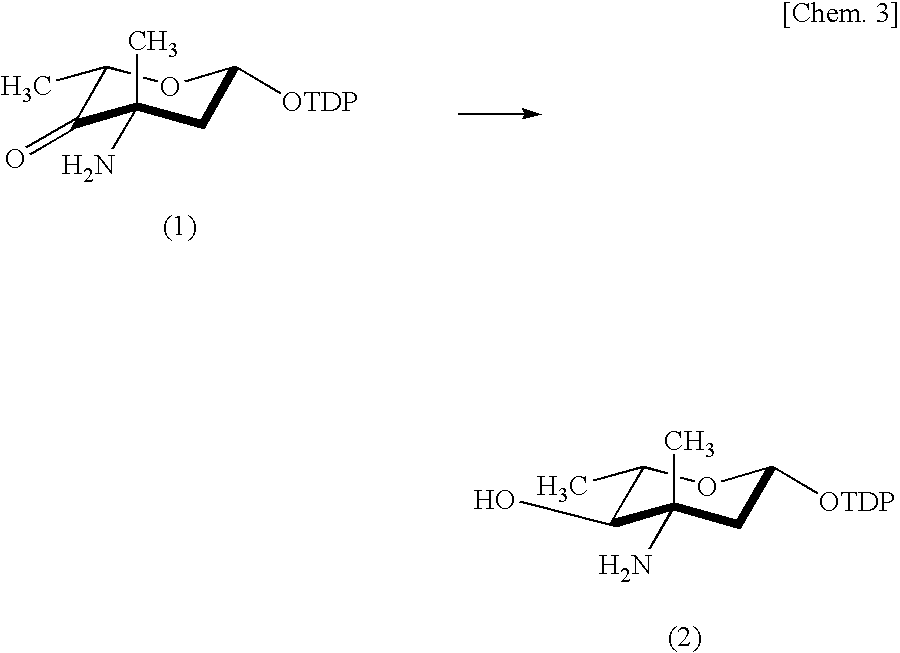Method for production of non-natural antibiotic
a production method and technology of antibiotics, applied in the field of microbial fermentation process, can solve the problems of low yield, low production cost, and only 54 g/ml of antibiotics
- Summary
- Abstract
- Description
- Claims
- Application Information
AI Technical Summary
Benefits of technology
Problems solved by technology
Method used
Image
Examples
example 2
[0054]Construction of Plasmid pDDNMV for Gene Disruption of dnmV Gene in Streptomyces Coeruleorubidus
[0055]To disrupt the dnmV gene by inserting a stop codon midway of its coding region, a DNA fragment containing a dnmV gene into which a stop codon was inserted was prepared by a two-step PCR method using, as the template, the DNA fragment isolated in Example 1. As the primers, primers containing a HindIII or XbaI recognition site, and a primer into which a stop codon TAG was inserted at the 84th tyrosine site (TAC) from the initiation codon of the dnmV gene were designed.
Dau5-HindIII:(SEQ ID NO: 7)5′-GGGAAGCTTGATCGCCCTCACGGAACTGCGCAGGCGCGG-3′dnmV-84Yc:(SEQ ID NO: 8)5′-CGCAGATGCGACTACGTCATCTCC-3′(the stop codon is underlined, SEQ ID NO: 8)Dau3-XbaI:(SEQ ID NO: 9)5′-GGGTCTAGAGCCGGCATGCGGATCGGCATGGAGGTG-3′
[0056]The PCR reaction in the first step was carried out in 50 μL of a reaction solution using the Dau5-HindIII primer (0.3 μmol / L), the dnmV-84Yc primer (0.3 μmol / L), and the templa...
example 3
[0063]Generation of dnmV-Disrupted Strain Using Plasmid pDDNMV for Gene Disruption of dnmV Gene
[0064]Streptomyces coeruleorubidus capable of producing daunorubicin was inoculated on an MS agar medium (2% S soybean meal, 2% mannitol, 2% agar), and cultivated at 28° C. for 7 days. After the cultivation, spores were scraped with 3 mL of a 2×YT broth (1.6% Difco bacto tryptone, 1% Difco bacto yeast extract, 0.5% NaCl), and heat-shocked at 50° C. for 10 minutes to prepare a liquid of host spores.
[0065]Escherichia coli containing plasmid pDDNMV (strain ET12567 / pUZ8002) was inoculated into 100 mL of an LB liquid medium (1% Difco bacto tryptone, 0.5% Difco bacto yeast extract, 0.5% NaCl, 0.1% glucose) containing 25 μg / mL chloramphenicol, 25 μg / mL kanamycin and 50 μg / mL apramycin, and cultivated at 37° C. overnight to prepare a preculture. This preculture was inoculated into the same LB liquid medium to give a final concentration of 1%, and cultivated at 37° C. for about 4 hours. After the c...
example 4
[0071]Expression of Ketoreductase Genes in dnmV-Gene-Disrupted Strain as Host
[0072]Plasmid pIJ4070 containing an ermE* promoter [Leskiw, B. K. et al., Proceedings of the National Academy of Sciences of the United States of America, (U.S.A.), 1991, vol. 88, p. 2461-2465 (non-patent literature 9)] was double-digested with EcoRI and BamHI, and fractionated by electrophoresis, and an EcoRI-BamHI fragment of approximately 0.3 kbp containing the ermE* promoter was extracted from the gel. This EcoRI-BamHI fragment was inserted between the EcoRI and BamHI sites of plasmid pSET152 to obtain plasmid pSET152-E*.
[0073]To isolate ketoreductase genes (orf29, eryBIV, avrE, and oleU) involved in the biosynthesis of sugars contained in antibiotics from a medemycin-producing bacterium (Streptomyces mycarofaciens) owned by Meiji Seika Kaisha, Ltd., an erythromycin-producing bacterium (Saccharopolyspora erythraea) owned by Meiji Seika Kaisha, Ltd., Streptomyces avermitilis JCM5070 as an avermectin-prod...
PUM
 Login to View More
Login to View More Abstract
Description
Claims
Application Information
 Login to View More
Login to View More - R&D
- Intellectual Property
- Life Sciences
- Materials
- Tech Scout
- Unparalleled Data Quality
- Higher Quality Content
- 60% Fewer Hallucinations
Browse by: Latest US Patents, China's latest patents, Technical Efficacy Thesaurus, Application Domain, Technology Topic, Popular Technical Reports.
© 2025 PatSnap. All rights reserved.Legal|Privacy policy|Modern Slavery Act Transparency Statement|Sitemap|About US| Contact US: help@patsnap.com



